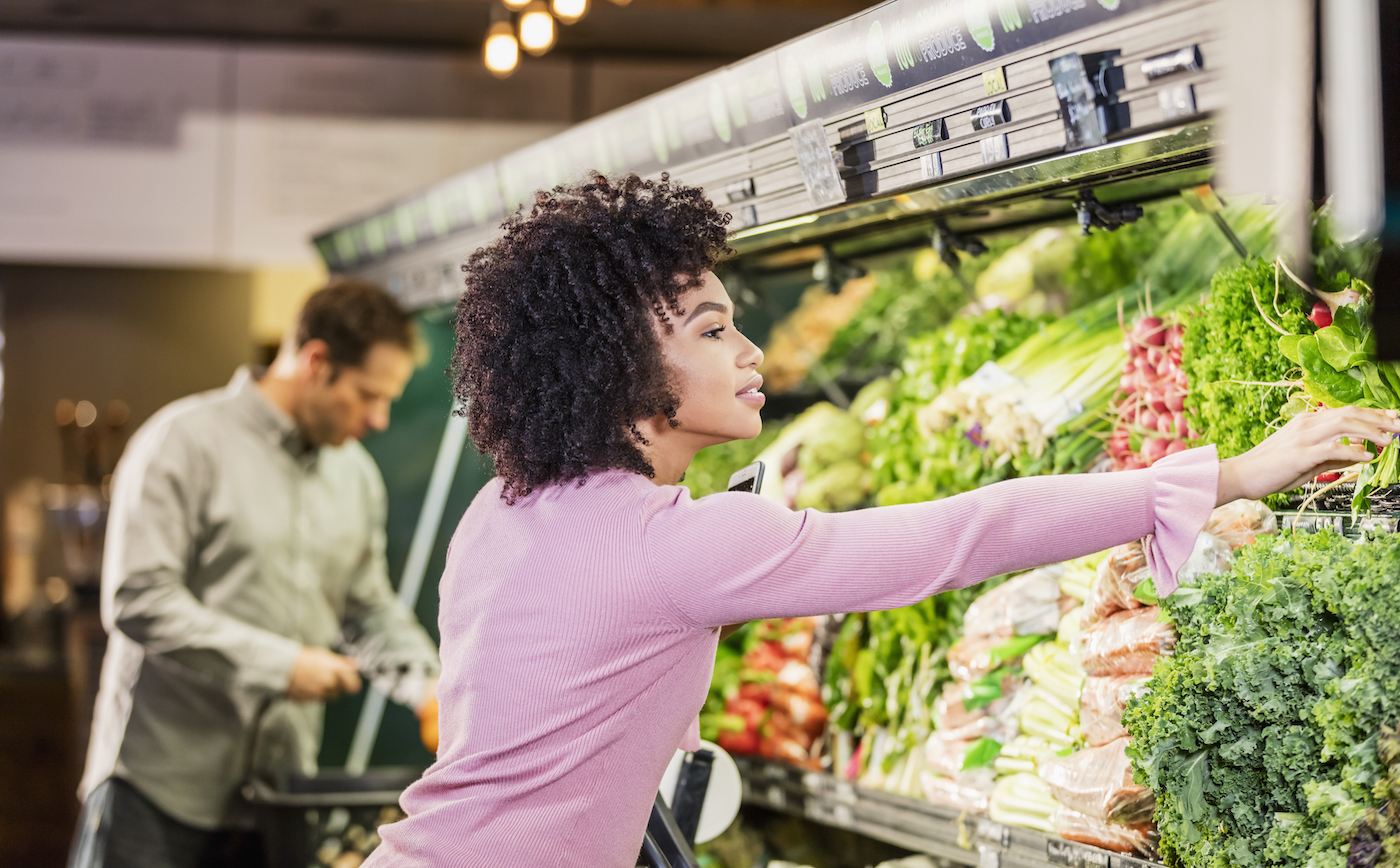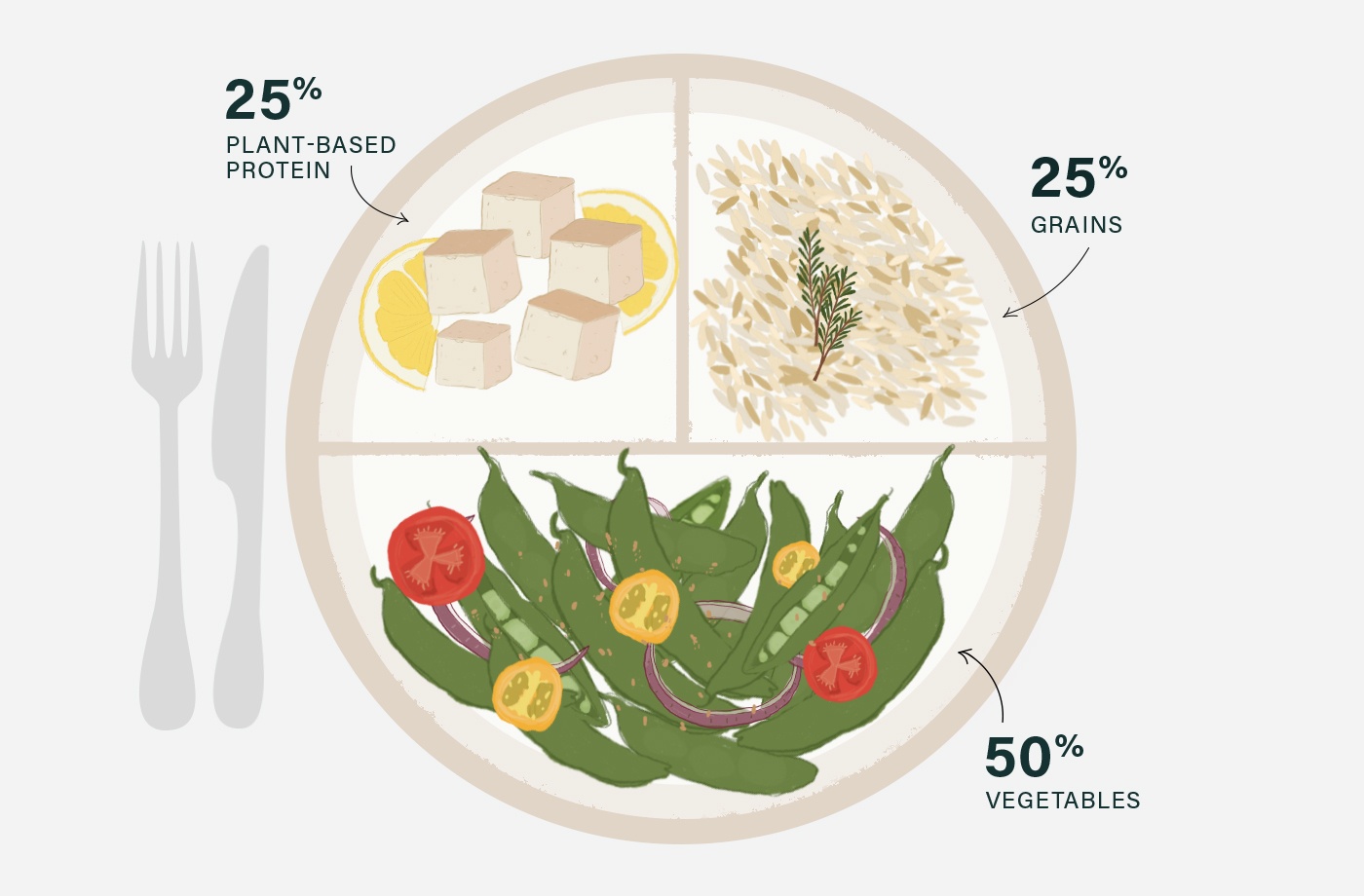
February 19, 2020 at 04:00PM by CWC
Back in the late 2000s—way before everyone was obsessed with oat milk and Beyond burgers—a facialist recommended that I cut back on my dairy and meat consumption for the sake of my skin. At the time, I felt like she was sentencing me to foodie prison. How could life be worth living without mac and cheese? Wouldn’t I wither away on a diet of sad, chicken-less salads? Still, I slowly (!) started phasing out animal products and have been happily vegan for about two months now.
In the decade since I first bid adieu to Brie, I’ve come to realize that plant-based meals are far from restrictive—in fact, I’m eating a wider variety of foods than ever before. (And not just because there are now vegan dupes for just about every animal product imaginable.)
Think about it: In the average grocery store, the produce section is a lot bigger and more diverse than the deli counter. “There are hundreds of different varieties of fruits and veggies and things that we often skip over at the store,” says Catherine Perez, MS, RD. She says that many of her clients fill up on the same handful of animal proteins over and over—chicken, beef, and pork on repeat, for instance—whereas there are dozens of readily-available, affordable plant-based proteins to experiment with, from tofu and beans to lentils, seitan, tempeh, and beyond. “You can make your meals different every single night if you want to,” she says.
For Sweet Potato Soul creator Jenné Claiborne, this is what makes plant-based meals particularly great for people who love food. All that’s required is a little imagination. “People tell me ‘I don’t know what to eat, I can’t keep eating black beans,” says the vegan chef, author, and YouTuber. “And it’s like, you don’t have to! There are so many different types of beans, and even if you only could eat black beans, there are so many different ways of preparing them: soup, burgers, black bean hummus, or even black bean falafel.”
ADVERTISEMENT
ADVERTISEMENTKate Spade Autumn/Winter Sale |
Eating a wide variety of ingredients isn’t just great for beating mealtime boredom—it’s also ideal from a nutritional perspective, says Perez. “For any diet, typically having more variety allows you to get more nutrients, especially when we’re thinking about colorful foods,” she says. “Those colors represent different nutrients that our bodes can utilize to help us feel our best—vitamins, minerals, and a ton of antioxidants we would often miss out on if we were eating a standard American diet.”
Of course, transitioning to a plant-based diet can be intimidating, especially when you’re asked to experiment with new fruits, vegetables, legumes, and grains that you’ve never used before. (Raises hand.) Here, Claiborne and Perez share some simple tips that’ll help bring more variety into your diet as a plant-based eater. Who knows, you might be so dazzled by your Technicolor crisper drawer that you won’t even notice you’re putting less bacon on your plate.
7 tips on transitioning to a plant-based diet to ensure you’re getting the most out of your food:
1. Get curious about new ingredients
If there’s a farmer’s market in your town, think of it as a free resource for your plant-based eating education. Vendors are usually happy to tell you about unfamiliar fruits and veggies—they may even let you taste-test items you’ve got your eye on—and can share tips on how to prepare them. Perez recommends sticking with the most versatile ingredients to start with in an effort to reduce food (and money) waste. “There are definitely those specialty items that you won’t use nearly as often,” she says. “You want to make sure you’re not buying something and making it a science experiment.”
If you don’t have a farmer’s market nearby, Claiborne suggests keeping your phone handy as you browse the grocery store produce department. “Go to your favorite recipe source, type in the ingredient, and see which recipes look most interesting to you,” she says. Again, simplicity wins when you’re getting started. “Go for a recipe that you can make when you first get home so the ingredient isn’t sitting in the refrigerator all week and then it goes bad because you didn’t have time to make that fancy thing,” she says. “Just buy as much as you need for whatever recipe and give it a try!”
2. Start small when using new ingredients
When introducing an unfamiliar ingredient into your rotation—and, perhaps, a foreign flavor profile—Perez says a little can go a long way. “A lot of my clients might not be too happy about eating kale, for example, because it can be bitter and tough,” she says. In this case, she wouldn’t necessarily recommend that they try to choke down a kale salad. Instead, she says, they could try adding a few leaves of kale to a smoothie or stir-fry alongside their favorite ingredients. “It will blend in with the flavor of those specific foods,” she says. Over time, your palate will adjust and you can start incorporating those new ingredients in a bigger way.
3. Use the 50-25-25 rule when meal planning
To ensure you’re getting the appropriate mix of nutrients in your plant-based meals, Perez says to mentally divide your plate into three quadrants. “Half of that plate should be some type of produce, like some dark leafy greens with bright orange or yellow vegetables for variety,” she says. “The other half of the plate can be split evenly between plant-based proteins—beans, lentils, or soy products like tofu and tempeh—and whole grains and starches, such as potatoes, squash, brown rice, quinoa, or farro.”
Condiments are another important part of every plant-based plate. “You want to make sure you’re getting a healthy fat like tahini or avocado, which fills you up and helps you absorb certain nutrients,” Claiborne says. “I also like to add a fermented vegetable, like kimchi, sauerkraut, or pickled anything. It’s not a requirement, but for flavor and digestion it’s really good.”

4. Don’t shy away from canned, frozen, or non-organic ingredients
If all you see are dollar signs (and hours of veggie-chopping time) when you think about filling your fridge with fresh farmer’s market fare, know that plant-based meals with a wide variety of ingredients can be extremely affordable and easy to prepare. “The most important message is to make sure we balance the plate,” says Perez, who’s adds that there’s nothing wrong with eating canned or frozen ingredients. “Buying canned beans saves a lot of time because you don’t have to worry about cooking them from scratch, and it can be really easy to make a stir fry with a frozen bag of mixed veggies.”
You also don’t need to worry about buying all organic produce if it’s not in your budget. “Start with eating more produce first and then worry about the organic thing,” says Claiborne. “It’s a lot healthier for you to eat more produce than to eat no produce because you can’t afford to eat all organic.” If you’ve got the cash to buy some organic fruits and veggies, prioritize the ones on the Dirty Dozen list—these rank highest for pesticide residue.
5. Plan your plant-based meals ahead of time
It takes a little bit of strategizing to create plant-based meals with the max number of ingredients, but Claiborne says that prep time is well worth it. “Especially when you’re newer to eating vegan, it’s important to just sit down for 10 or 15 minutes and do a little bit of planning ahead. In the moment when you’re hungry, it’s so much more difficult to figure out what to eat.” This doesn’t have to mean meal-prepping all of your food in advance, if that’s not your thing. Rather, make a list of the recipes you’ll make for the week and all of the ingredients needed for each. “It helps you shop better and be more confident that you have this—that you are gonna be able to eat well,” says Claiborne.
6. Get inspiration from other cultures
If you start getting bored with your usual avocado toast and smoothie bowls, there’s a whole world of plant-based eating inspo outside your home country’s borders. “There are so many civilizations out there that utilize simple, plant-based ingredients to make super-flavorful meals, and we can do a lot of learning from them to enhance what we’re doing,” says Perez. It’s no wonder that vegan Mexican food is taking off in 2020, especially given that the cuisine’s roots are inherently plant-based.
ADVERTISEMENT
ADVERTISEMENTSports Direct Free Delivery on All Orders! |
“Plant-based eating is not that much of a leap for most cultures,” Claiborne adds. “Take advantage of that and don’t think of it as new and restrictive, because it’s not at all.”
7. Consult a pro if you need more guidance
Finally, if you still feel like you’re not getting everything you need from a plant-based diet—particularly if you’re feeling tired or low in energy—Perez suggests scheduling a session with a nutrition expert. “If you aren’t sure about your specific needs or how to nourish yourself properly on a plant-based diet, seek professional help from a dietitian,” she says. “They’re there to help with these transitions and can steer you in the right direction if you need it.”
Make sure these 10 affordable plant-based staples are always on your grocery list—then use them to make these high-protein recipes in your Instant Pot.
Author Erin Magner | Well and Good
Selected by CWC

ADVERTISEMENT
ADVERTISEMENTUp to 30% off Gift Sets |







